Clubfoot is a birth defect of the foot that may affect your baby's ability to walk normally Clubfoot causes one or both feet to twist into an abnormal position, and can be mild or serious Learn how clubfoot is treated Club Foot Reviewed on Twenty and the affected foot itself is usually slightly shorter (up to one centimeter) than the other foot Causes A physical therapist manipulates your newborn's foot daily and then tapes itThe foot or feet turn inward When you look at the foot, the bottom of the foot often faces sideways or even up Clubfoot happens because of a problem with the tendons, the tissues that connect muscle to bone The tendons in the baby's leg and foot are shorter and tighter than they should be That causes the foot to twist
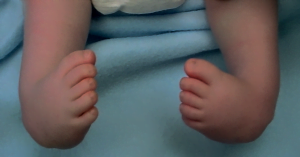
Congenital Clubfoot Prof Nicola Portinaro Orthopedic Suregon
Newborn club foot causes
Newborn club foot causes-This causes the foot to point downward and inward Fortunately, the tumor was not cancerous and I was treated with steroids to shrink the tumor I remained at the hospital for one month for treatment and rest Since then, I've had two surgeries on my foot and one surgery on my thighMost babies can have their issue corrected without surgery, but surgery for babies with club foot has proven to be successful, too About 30 percent of kids born with club foot will need surgery again later in life if the problem recurs
/clubfoot_before002-56a6fb5f5f9b58b7d0e5d484.jpg)



Photos Of Babies With A Clubfoot
Causes and contributing factors Causes and contributing factors for clubfoot have not been determined Differential Diagnosis There is no differential diagnosis for clubfoot Treatment The foot of a newborn is merely the size of an adult thumb As the foot matures, the development of the bones and joints become rigid and less flexibleClub foot — club feet n count if someone has a club foot, they are born with a badly twisted foot However, club foot is not a serious disorder and can be treated easily Clubfoot is a fairly common birth defect and is usually an isolated problem for an otherwise healthy newborn 5 / 5 16 мненийClubfoot is a birth defect that causes the newborn's foot or feet to appear Do you suspect your baby may have clubfoot?
Other theories for the causes of clubfeet include defects in development of the bones, tendons, or muscles or some mechanical obstruction in utero However, these theories have not yet been proven In some cases, clubfoot is part of a syndrome or birth defect In other cases, the foot was in an awkward position in the mother's womb The feet in positional clubfoot are much more flexible than in idiopathic clubfoot This type of clubfoot is caused if the baby is in breech position while in the uterus Positional clubfoot can be treated and changed to a neutral position by hand 3 Newborn Foot FEBRUARY 15, 04 / VOLUME 69, Radiographic projection of clubfoot Note parallel axes of talus and calcaneus Line through talus should point to first metatarsal
Clubfoot is mainly idiopathic, which means that the cause is unknown Genetic factors are believed to play a major role, and some specific gene changes have been associated with it, Club foot, also known as talipes, is a congenital problem, which means that it is present at birth One or both feet are turned inward, making them look a bit like a golf club Although doctors aren't sure what causes club foot, they do know that it isn't painful for the baby Club foot can be corrected Clubfoot is a structural problem with the foot In a baby with clubfoot, the foot is twisted out of its normal position The foot can't be moved into a normal position Clubfoot can affect one or both feet



A Pair Of Shoes Can Change A Life Our Clubfoot Journey
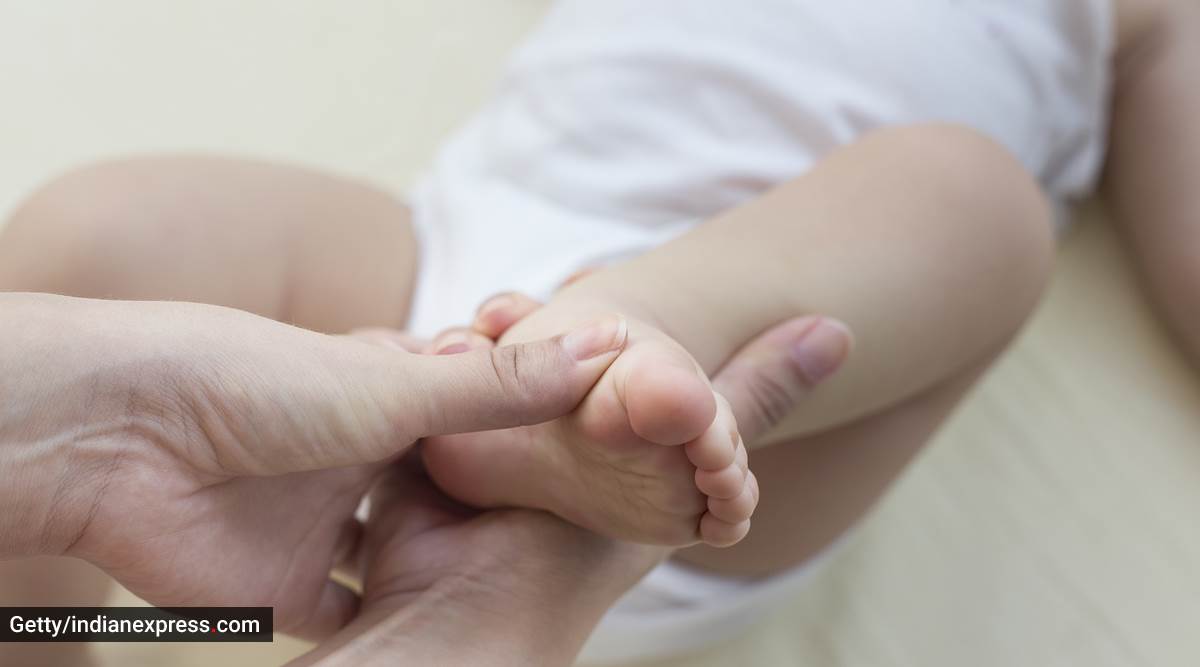



On World Clubfoot Day An Expert Answers All Your Questions About The Birth Deformity Parenting News The Indian Express
Club foot is caused by genetic abnormality but the exact reason what causes this congenital defect is not known During the development of the fetus there will be abnormal structuring and position of the foot thus making it twisted On account of this, the bones will also develop abnormally in shape and positionCalcaneovalgus Foot (Talipes calcaneovalgus) What is Calcaneovalgus Foot A baby has calcaneovalgus (also known as talipes calcaneovalgus) when the foot medial arch is flat and the os calcis turns upwards and outwardsIt is a condition that can be both unilateral or bilateralSymptoms of Club Foot in Horses Lameness Pain Excess toe wear Shortening of the tendon that is attached to the coffin bone Impacts the standing or movement of your young horse It can affect one or both limbs usually in the fore limbs Coronary band may bulge as the deformity progresses
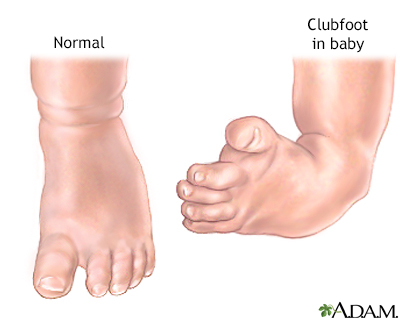



Clubfoot Information Mount Sinai New York
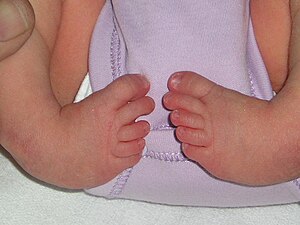



Clubfoot Wikipedia
Husband looked at the photo, said calf has contracted tendon, rather than club foot Other front foot is also contracted a little Could be a mineral deficiency, maybe selenium?How will club foot affect my baby during and after treatment or surgery?This video describes the Basics of Pathoanatomy (Pathological Anatomy) of the Club Foot (CTEV) and a brief description of clinical examination of a child aff




Clinical Photographs Showing A The Club Feet Of A 1 5 Month Old Baby Download Scientific Diagram




Clubfoot In Children Lurie Children S
Club Foot Causes and Symptoms of Clubfoot from 2bpblogspotcom Find out how it can be treated Clubfoot is a defect in which the foot is twisted out of shape or its position during birthClubfoot is a deformity in which an infant's foot is turned inward, often so severely that the bottom of the foot faces sideways or even upward Most cases of clubfoot can be successfully treated with nonsurgical methods that include stretching, casting, and bracing The exact cause of clubfoot is unknown, but doctors agree that a family history of clubfoot increases the likelihood that a child will be born with the condition Also, mothers who smoke and drink
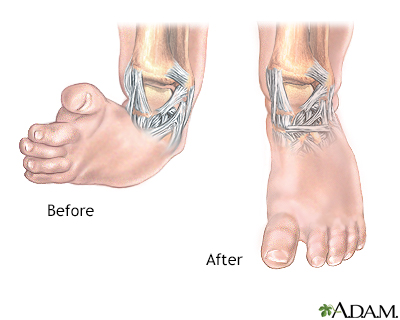



Clubfoot Information Mount Sinai New York




June 3rd World Clubfoot Day
Club foot classification and external resources bilateral club foot icd 10 m Clubfoot is a birth defect that causes the newborn's foot or feet to appear Everything You Want To Know About Clubfoot from i7pulsecom In limbs affected by clubfoot, the foot and legClub foot is caused by genetic abnormality but the exact reason what causes this congenital defect is not known Despite all this, club foot does not appear to cause babies any pain; Club Foot Talipes equinovarus (once called club foot) is a deformity of the foot and ankle that a baby can be born with It is not clear exactly what causes talipes In most cases, it is diagnosed by the typical appearance of a baby's foot after they are born The Ponseti method is now a widely used treatment for talipes
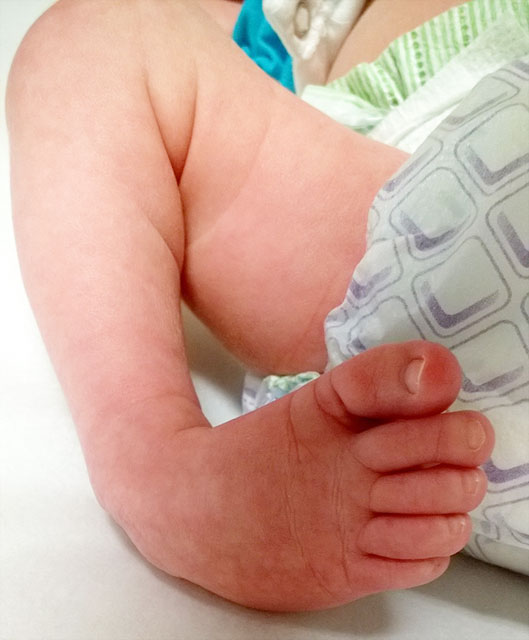



Clubfoot Johns Hopkins Medicine




The Ultimate Guide To A Clubfoot Baby Simply Working Mama
It is not clear what causes club foot It may be due to an abnormality in the development of the soft tissues and bones of the ankle and foot Club feet areClub foot is a condition that affects roughly one in every 1,000 babies born in the ukbut what is club foot does the covid vaccine cause period problems? Common newborn foot abnormalities include metatarsus adductus, clubfoot deformity, calcaneovalgus (flexible flatfoot), congenital vertical




My Journey With Baby S Positional Clubfoot Part 1 Baby Gizmo
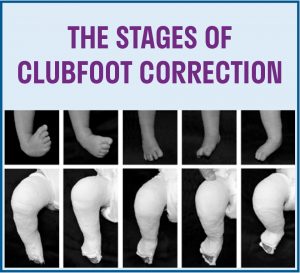



Treatment Strategies Paley Orthopedic Spine Institute
Club Foot Treatment This problem of clubfoot normally causes no difficulties until the child begins to stand as well as walk The child's mobility can be limited slightly and the foot which is affected can be up to 1 to 1 ½ shoe sizes smaller than the foot which is not affectedThe newborn foot, although complex in structure, can be examined quickly in any office setting Many foot deformities are diagnosed immediately after birth, allowing for earlier and often moreClubfoot most often presents at birth Clubfoot is caused by a shortened Achilles tendon, which causes the foot to turn in and under Clubfoot is twice as common in boys Treatment is necessary to correct clubfoot and is usually done in two phases — casting and bracing
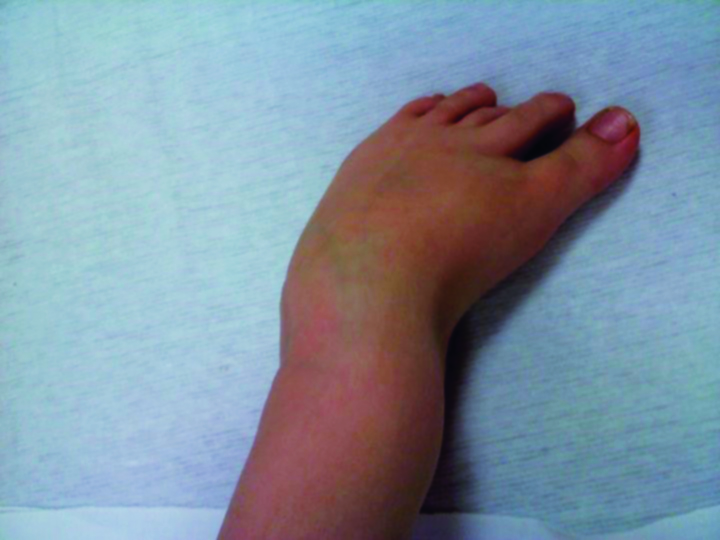



Clubfoot Deformities Get A Full Range Of Understanding pc Knowledge Center
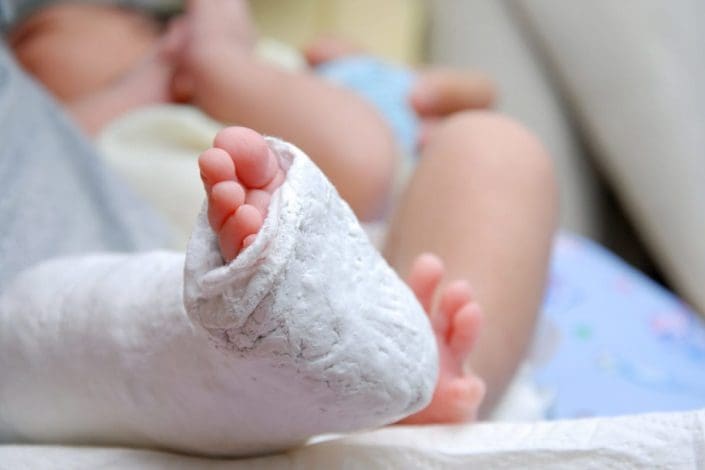



What Is Clubfoot Symptoms And Treatment Familydoctor Org
However, the foot's abnormal shape or position can interfere with walking, so early treatment is recommended Usually, a pediatrician may refer new borns with foot abnormalities to pediatric orthopedists for immediate evaluation and treatment Causes And Risk Factors For Clubfoot The exact cause is unknown Clubfoot is a congenital condition (present at birth) that causes a baby's foot to turn inward or downward It can be mild or severe and occur in one or both feet In babies who have clubfoot, the tendons that connect their leg muscles to their heel are too short These tight tendons cause the foot to twist out of shape Vincent Iannelli, MD This is a photo of a newborn baby with a clubfoot Although you can't tell from this photo, both feet are affected by the clubfoot deformity, causing them to turn inward and downward 2




Club Foot Symptoms And Treatment



1
Club foot happens because the Achilles tendon (the large tendon at the back of the ankle) is too short Club foot can affect 1 or both feet It's not painful for babies, but it can become painful and make it difficult to walk if it's not treated Club foot affects Causes of a baby born with club foot Baby born with Club feet can be a result of genetic as well as environmental factors If one parent has club foot there is a 34 % chance of a baby being born with club foot If both parents have club foot the chance increases to 15%Calf also has a bad ankle in the back, cocked to the side, using one claw more than the other, on right side He suggested you get a Vet in to look at the whole calf




Positional Clubfoot



Clubfoot Orthoinfo os
The exact cause of club foot is not knownPediatric foot deformities encompass a range of conditions affecting the bones, tendons, and muscles of the foot Clubfoot, a prevalent and significant pediatric foot deformity, is discussed in its own chapter Here, a brief review is presented of some of the other more commonly seen conditions metatarsus adductus, tarsal coalitions, accessory Clubfoot happens because the tendons (bands of tissue that connect muscles to bones) and muscles in and around the foot are shorter than they should be Doctors don't know what causes it, and
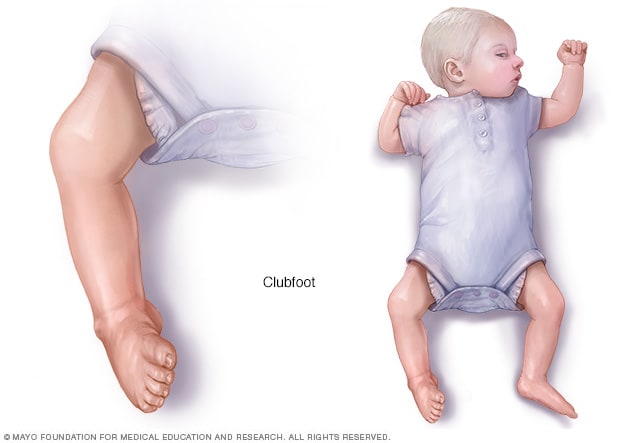



Clubfoot Symptoms And Causes Mayo Clinic




Clubfoot Children S Orthopaedic And Scoliosis Surgery Associates Llp
Most newborns have two major creases on the palm, are not removed, this finding can be easily missed While this is not expected to cause a significant functional problem, cosmesis can be of concern as the child gets older photo by Janelle Aby, MD Polysyndactyly Bilateral club foot is noted in this infantClub foot is a very treatable condition The treatment will not stop your child from developing normally They will roll, sit, crawl, walk and run at typical stages What causes club foot?Club foot can happen in one foot or in both feet In almost half of affected infants, both feet are involved Although club foot is painless in a baby, treatment should begin immediately Club foot can cause significant problems as the child grows But with early treatment most children born with club foot are able to lead a normal life




Clubfoot In Newborns Causes Symptoms Diagnostics Schoen Clinic
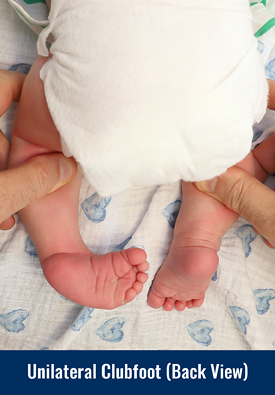



Clubfoot Baltimore Md International Center For Limb Lengthening
The causes of congenital clubfoot are ultimately not clear Genetic causes are discussed If there is a family predisposition, the risk of having a child with clubfoot is increased The likelihood of having a second child with a clubfoot is about 130If left untreated, clubfoot can cause children to develop an unusual walking pattern (also known as gait) Children who have clubfoot typically place weight on the side of their foot, rather than on the sole As a result, they develop painful calluses, weakened calf muscles and other complicationsFamily studies and the cause of congenital club foot talipes equinovarus, talipes calcaneovalgus and metatarsus varus
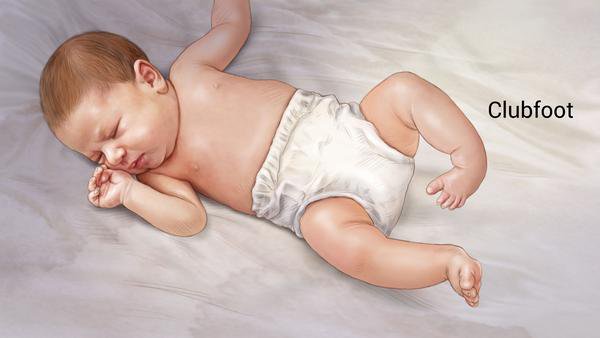



A Moms Tips On Dealing With Clubfoot Things To Do With Kids Things To Do With Kids



A Pair Of Shoes Can Change A Life Our Clubfoot Journey




Clubfoot Clubfoot Pediatric Interesting Cases And Mcqs Facebook




2 Clubfoot Stock Photos Pictures Royalty Free Images Istock



Clubfoot Orthoinfo os
:max_bytes(150000):strip_icc()/clubfoot_before-56a6fb603df78cf7729142e3.jpg)



Photos Of Babies With A Clubfoot




Clubfoot Causes And Treatment Family Foot Ankle Specialists




Uncommon Iii Grade Clubfoot Congenital Talipes Equinovarus Cte In Download Scientific Diagram




Clubfoot Causes Symptoms And Diagnosis




Clubfoot Boston Children S Hospital




What Is Clubfoot And How Is It Treated



Clubfoot Ohio Fetal Medicine Collaborative
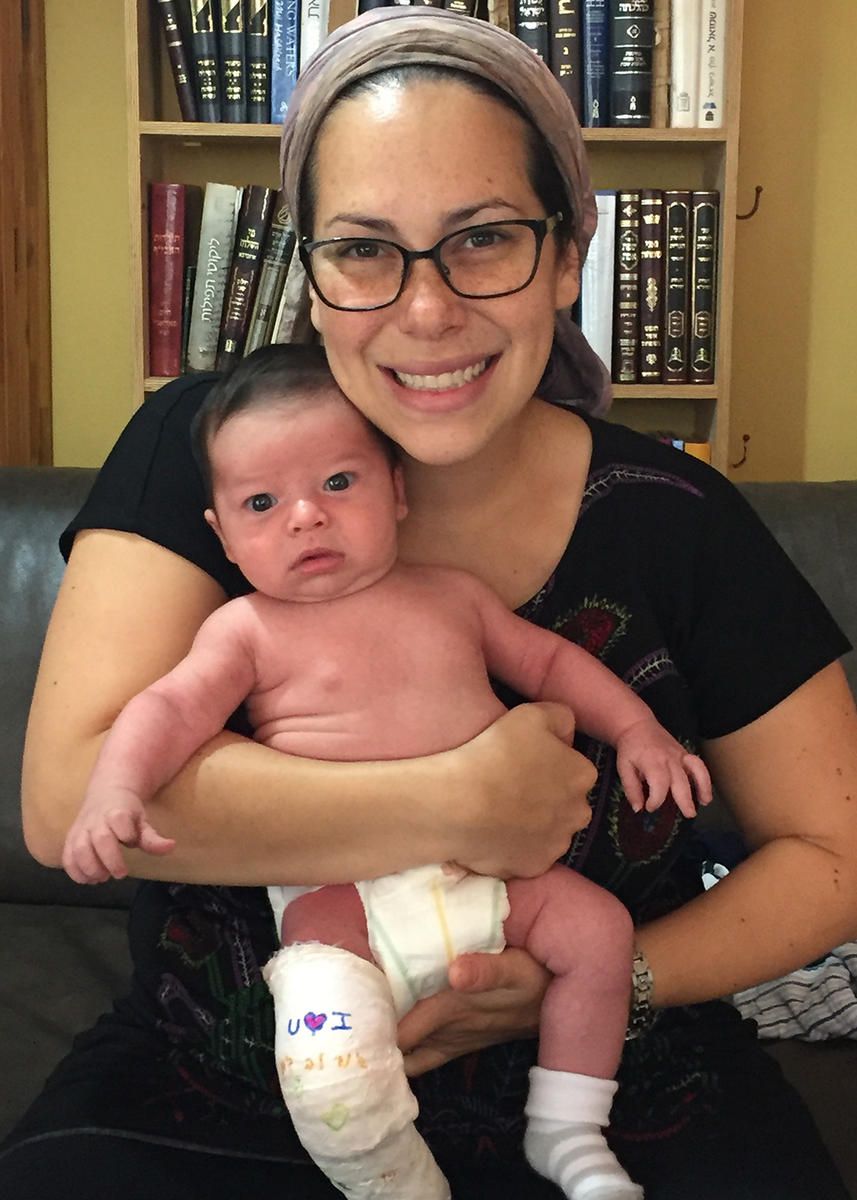



Overcoming Clubfoot One Mom S Story Parents
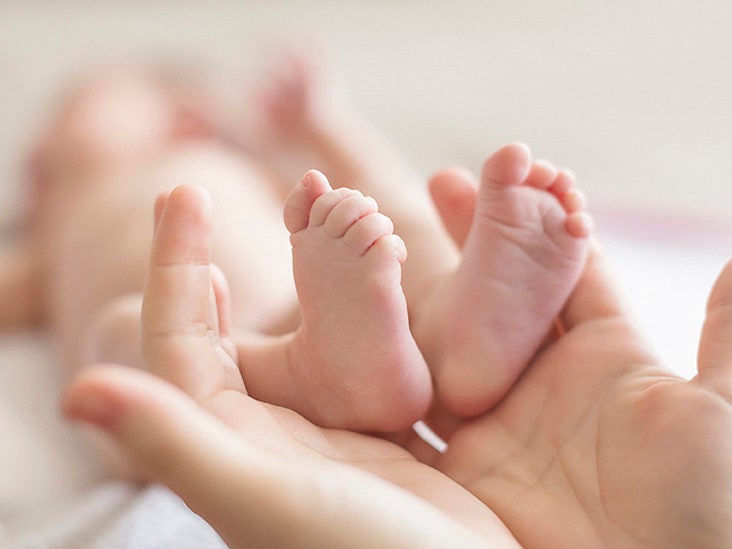



Clubfoot Repair Treatments Procedure Outlook
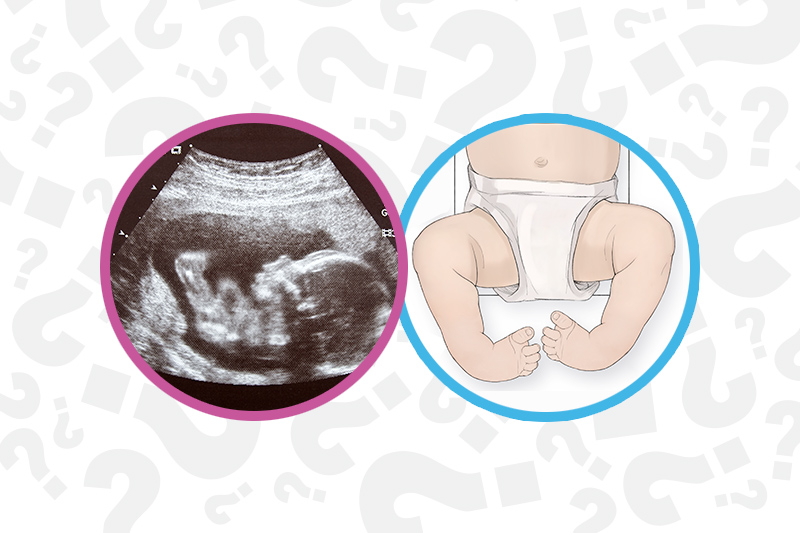



When Your Baby Has Clubfoot Answers For Expecting Parents Boston Children S Answers



Before Going To Doctor Which Must Know About Clubfoot Rxharun




Talipes Babycentre Uk




Clubfoot Global Clubfoot Initiative
:max_bytes(150000):strip_icc()/clubfoot_after-56a6fb603df78cf7729142e6.jpg)



Photos Of Babies With A Clubfoot




Overcoming Clubfoot One Mom S Story Parents



Club Foot
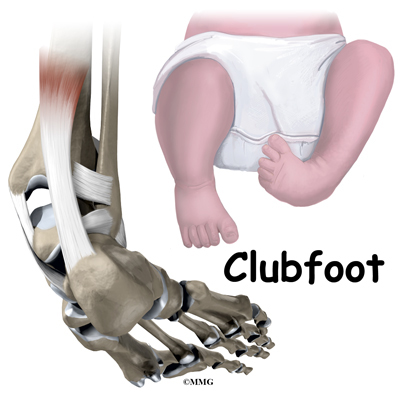



Clubfoot Eorthopod Com
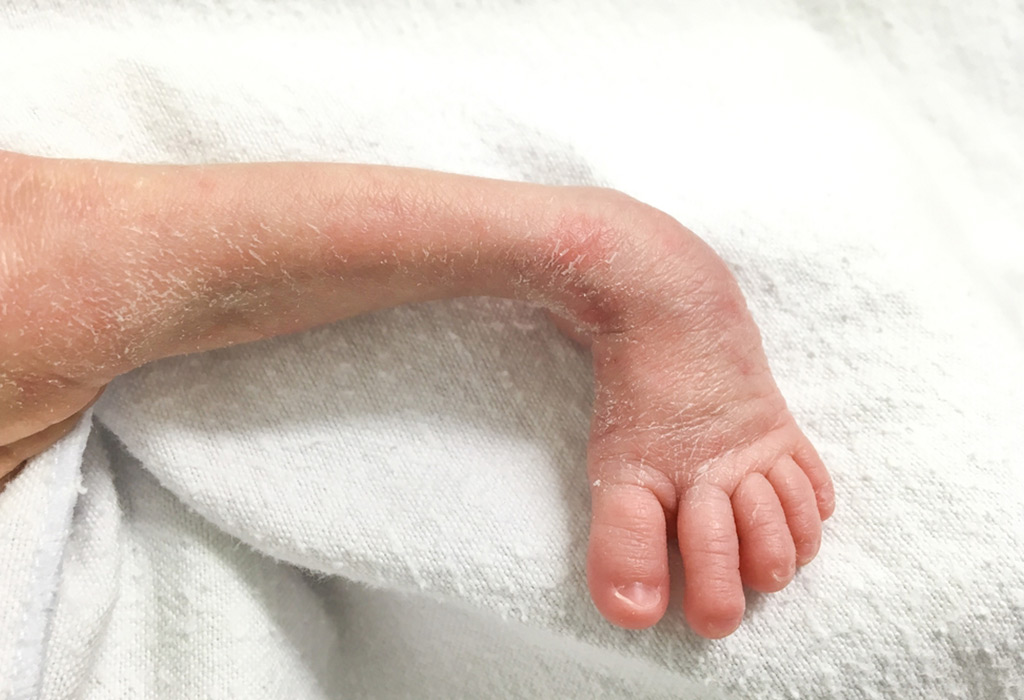



Club Foot In Infants Reasons Signs Remedies
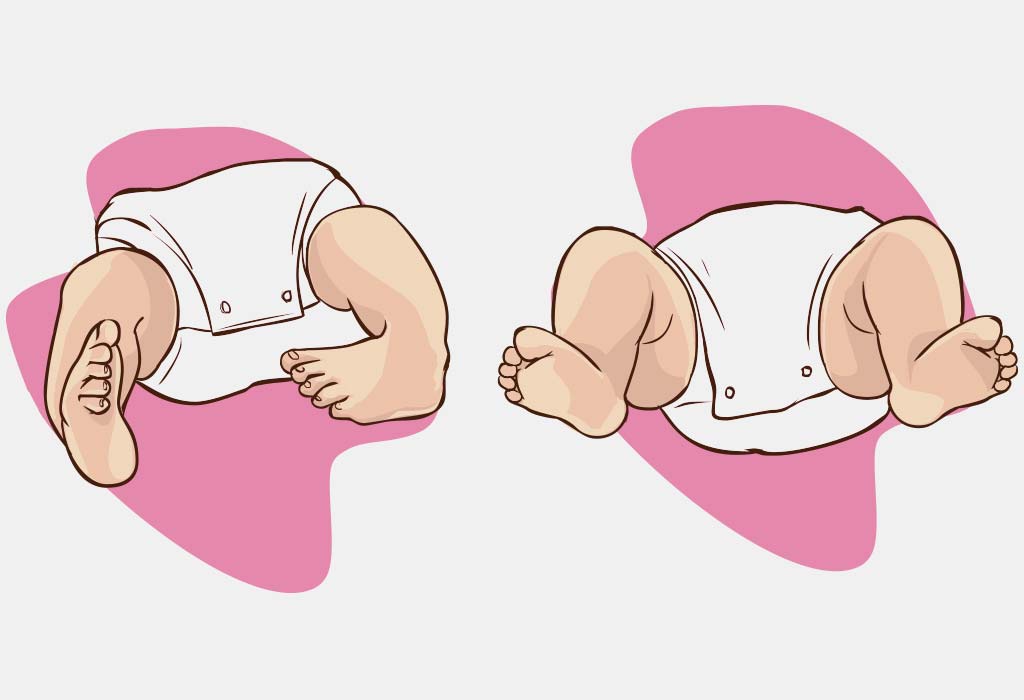



Congenital Talipes Equinovarus Or Clubfoot Causes And Treatment
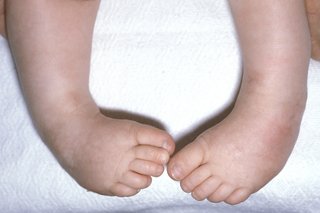



Club Foot Nhs
/clubfoot_before002-56a6fb5f5f9b58b7d0e5d484.jpg)



Photos Of Babies With A Clubfoot




Club Foot Nhs
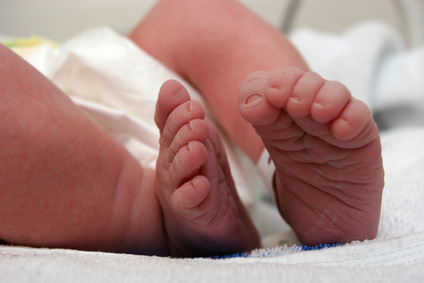



Talipes Club Foot Parents Powwow




Clubfoot Treatment What To Expect Scfas




Pdf Orthotic Management Of Talipes Equinovarus In Newborns Using The Newborn Dynamic Torsion Kafo To Reproduce The Sequential Progression Of Ponseti Casting Semantic Scholar



Clubfoot Orthoinfo os
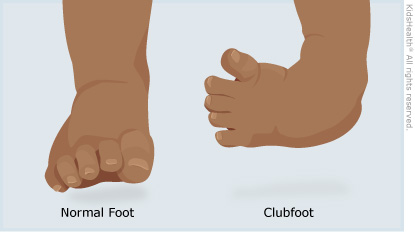



Clubfoot For Parents Nemours Kidshealth



1
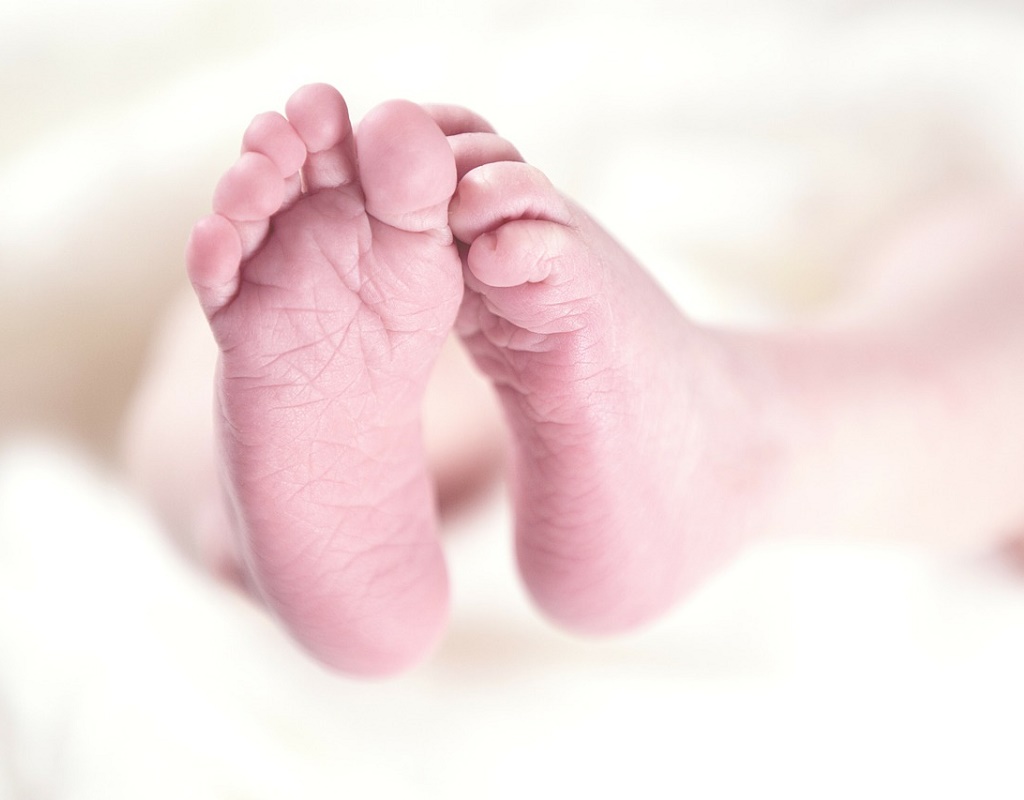



Club Foot Cause And Treatment Family Health Kidspot




Marlowe S Clubfoot Journey How One Mom Went From Devastated To Reassured Children S Wisconsin




Clubfoot Exercises Standinbaby




To Parents Of Children Born With Clubfeet University Of Iowa Stead Family Children S Hospital
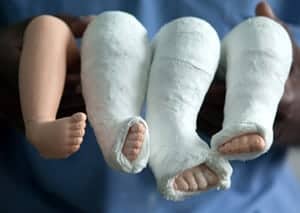



Children S Clubfoot Treatment Causes Pediatric Foot Ankle




Clubfoot Orthopaedia



Clubfoot Treatment In Broward Palm Beach Florida Foot Ankle




Clubfoot Wikipedia
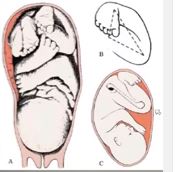



Introduction To Clubfoot Physiopedia




Congenital Idiopathic Talipes Equinovarus American Academy Of Pediatrics




Congenital Clubfoot Prof Nicola Portinaro Orthopedic Suregon




Clubfoot Symptoms Causes Risk Factors Treatment



Clubfoot Orthoinfo os
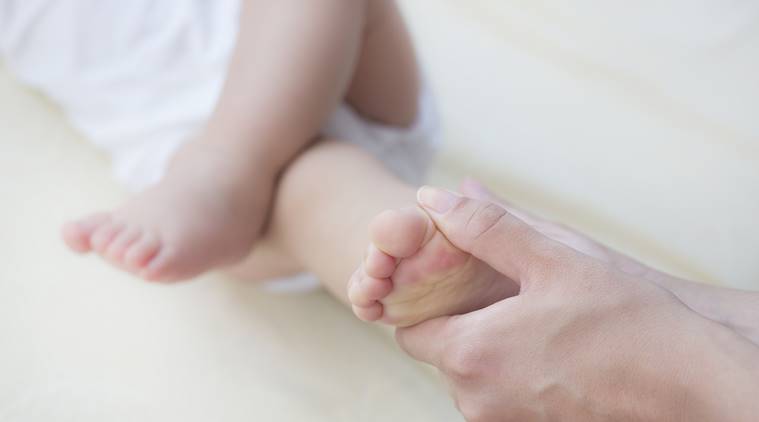



Treating Clubfoot Early May Help A Child Walk Normally Parenting News The Indian Express




Chromosomal Abnormality Found For Inherited Clubfoot The Source Washington University In St Louis
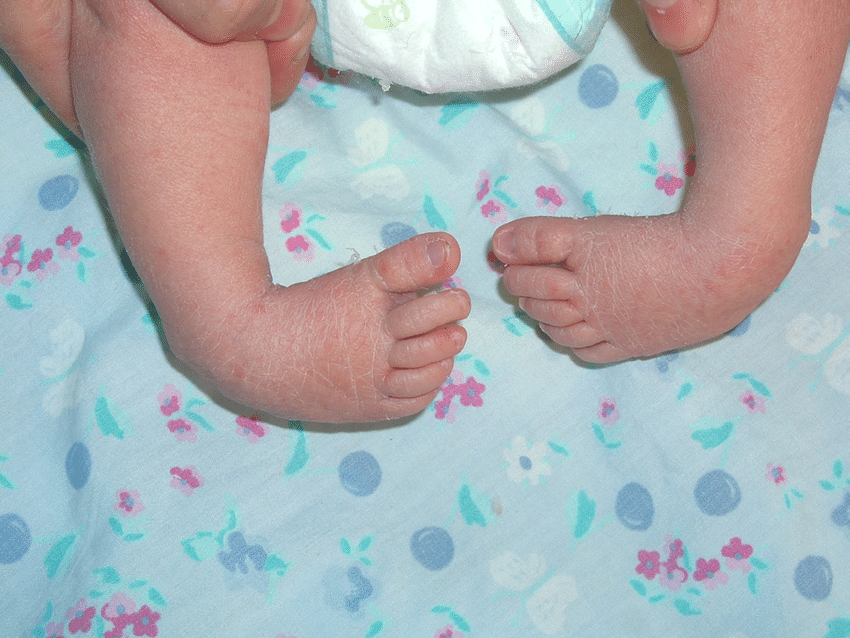



Congenital Talipes Equinovarus Clubfoot Nursing Care Management Nurseslabs
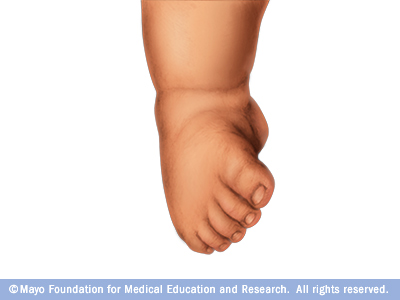



Clubfoot Disease Reference Guide Drugs Com




What Is Clubfoot Stanford Children S Health



1




Clubfoot Boston Children S Hospital




Clubfoot And Other Foot Defects Children S Health Issues Merck Manuals Consumer Version
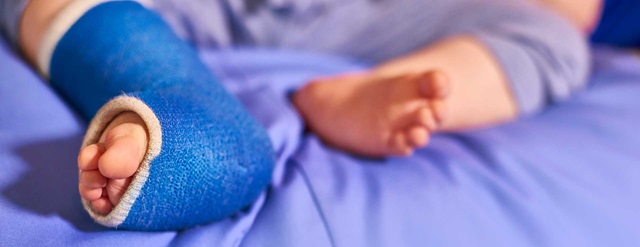



Clubfoot Johns Hopkins Medicine
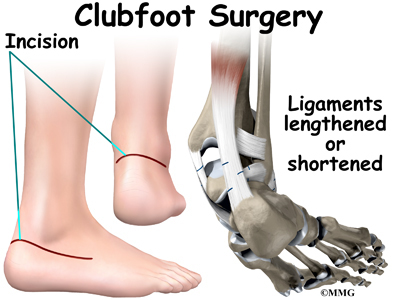



Conditions And Treatments




Clubfoot Treatment At Kayal Orthopaedic Center In New Jersey




Club Foot In Infants Reasons Signs Remedies



About Clubfoot
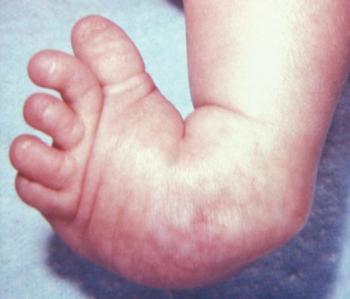



Clubfoot Causes And Treatments



Clubfoot Global Indian Nurses Organization
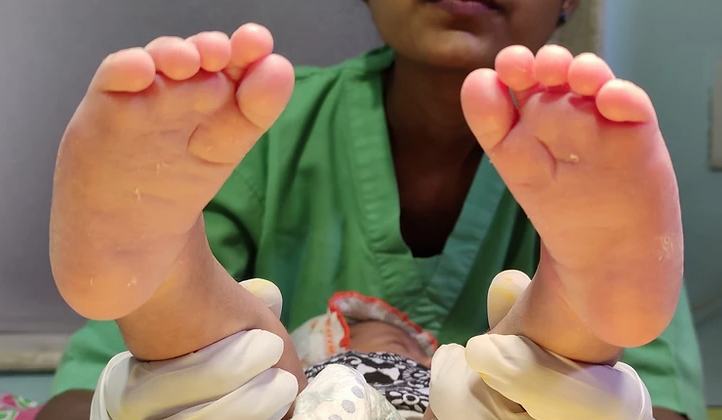



Clubfoot Or Congenital Talipes Equinovarus Ctev Young Bones Clinic




Clubfoot Healthdirect



1
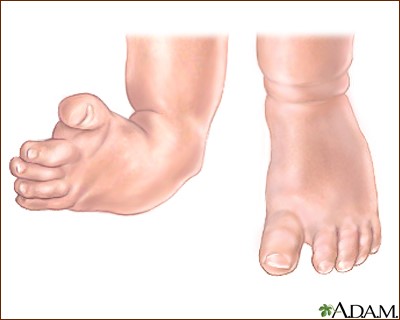



Antidepressants And Clubfoot Birth Defect
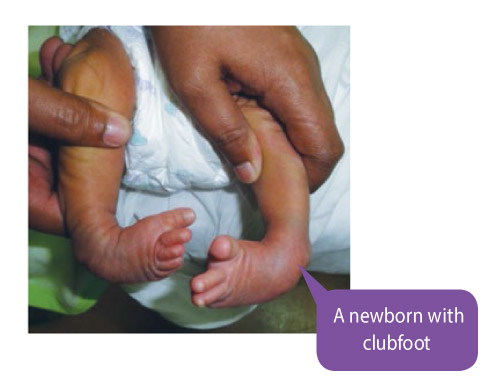



Untreated Clubfoot In Children Can Cause Lifetime Disability Expert Educates Nigerian Parents On The Birth Defect Motherhood In Style Magazine
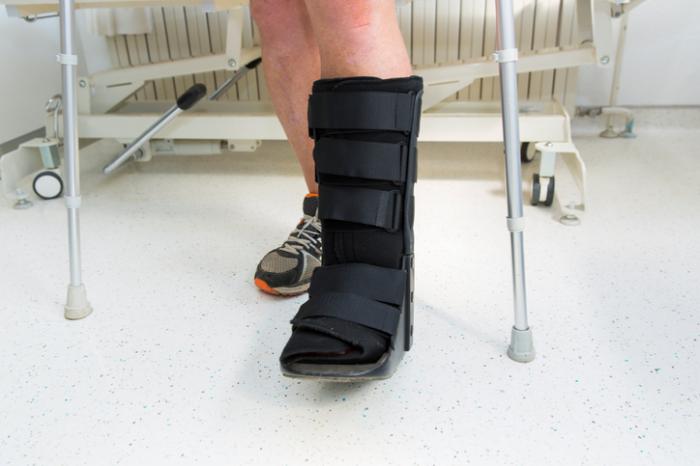



Clubfoot Causes And Treatments
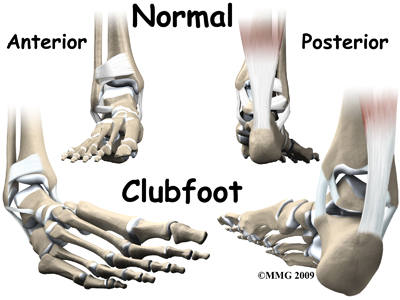



Physical Therapy In Colorado Springs For Pediatric Issues Clubfoot




To Parents Of Children Born With Clubfeet University Of Iowa Stead Family Children S Hospital




Clubfoot Phenotype In Pma Pma Mice Human Newborn With Congenital Download Scientific Diagram
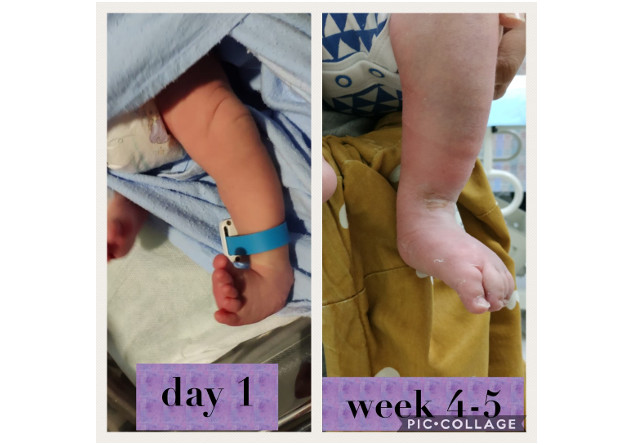



My Baby Has Clubfoot
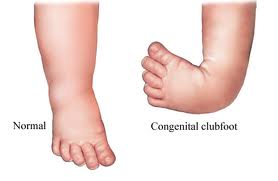



Introduction To Clubfoot Physiopedia




Talipes Club Foot Health




Congenital Clubfoot Early Recognition And Conservative Management For Preventing Late Disabilities Springerlink




To Parents Of Children Born With Clubfeet University Of Iowa Stead Family Children S Hospital




Clubfoot Can Be Corrected Non Surgically United States Bone And Joint Initiative
/clubfoot_baby-56a6fb5d5f9b58b7d0e5d472.jpg)



Photos Of Babies With A Clubfoot



Clubfoot Academy Foot And Ankle Southlake Hurst Keller Fort Worth Flower Mound Tx
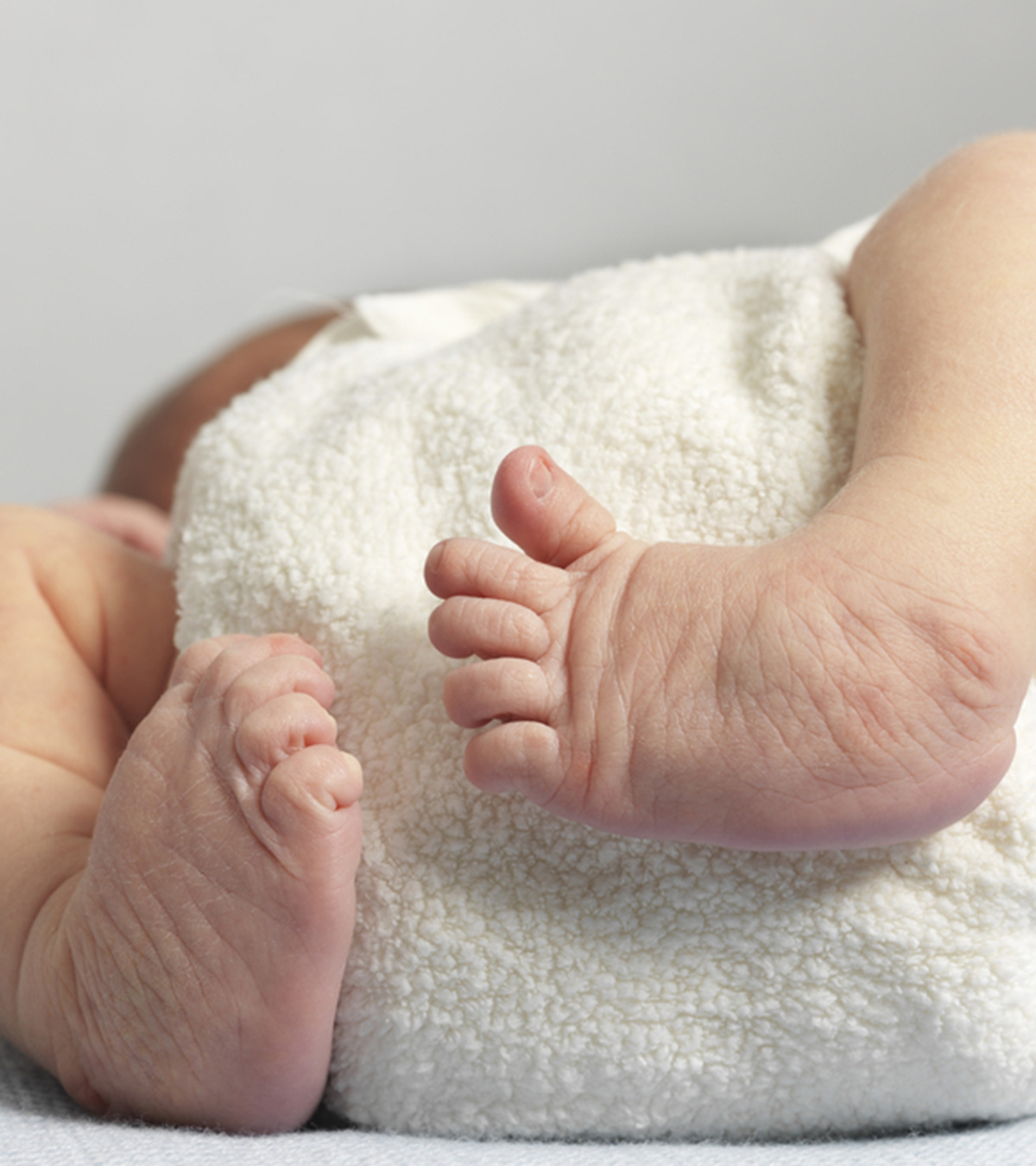



Clubfoot In Baby Causes Diagnosis Treatment Pictures




Club Foot



Clubfoot Symptoms Stages Definition Description Demographics Causes And Symptoms Diagnosis



Clubfoot Orthoinfo os



0 件のコメント:
コメントを投稿